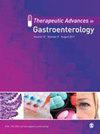1990-2019年204个国家和地区消化性溃疡疾病负担、趋势和不平等:一项基于人群的研究
IF 3.4
3区 医学
引用次数: 0
摘要
背景:消化性溃疡疾病一直是世界人口的主要威胁,它仍然是世界范围内住院和卫生保健资源利用的重要原因。目的:我们旨在描述消化性溃疡疾病的全球负担、趋势和不平等。设计:进行观察性研究。方法:在对2019年全球疾病、伤害和风险因素负担研究的二级分析中,我们提取了年龄标准化发病率(asir)、残疾调整生命年率(ASDRs)和死亡率(ASMRs)的数据;然后,我们按年龄、地区水平和国家进行分层;随后,我们计算了ASIR、ASDR、ASMR的估计年百分比变化(EAPC),并量化了消化性溃疡疾病死亡率的跨国不平等。结果:在全球范围内,ASIR呈持续下降趋势,从1990年的63.84 / 10万人下降到2019年的44.26 / 10万人,年均下降1.42% [EAPC = - 1.42 (95% CI: - 1.55 ~ - 1.29)]。ASDR呈持续下降趋势,EAPC为- 3.47%(- 3.58 ~ - 3.37)。ASMR持续下降,与1990年相比,2019年下降了近一半(每10万人中3.0人对7.39人),年下降2.55% [EAPC = - 3.36 (95% CI: - 3.47至- 3.25)]。与社会人口指数(SDI)相关的不平等显著减少,从1990年最贫穷国家和最富裕国家之间每10万人中超过190.43残疾调整生命年(DALY) (95% CI: - 190.83至- 190.02)降至2019年的每10万人中超过62.85 DALY (95% CI: - 62.81至- 62.35)。结论:1990 - 2019年全球消化性溃疡发病率和死亡率显著下降。这些健康收益与各国与sdi相关的不平等程度大幅减少相一致,这与该区域观察到的整体社会经济和健康改善相匹配。本文章由计算机程序翻译,如有差异,请以英文原文为准。
Peptic ulcer disease burden, trends, and inequalities in 204 countries and territories, 1990–2019: a population-based study
Background: Peptic ulcer disease has been a major threat to the world’s population, which remains a significant cause of hospitalization worldwide and healthcare resource utilization. Objectives: We aimed to describe the global burden, trends, and inequalities of peptic ulcer disease. Design: An observational study was conducted. Methods: In this secondary analysis of the Global Burden of Disease, Injuries, and Risk Factors Study 2019, we extracted data for age-standardized incidence rates (ASIRs), disability-adjusted life year rates (ASDRs), and mortality rates (ASMRs); then, we stratified by age, level of regionals, and country; subsequently, we calculated estimated annual percentage changes (EAPC) of ASIR, ASDR, ASMR, and quantified cross-country inequalities in peptic ulcer disease mortality. Results: Globally, ASIR showed a continuous downward trend, from 63.84 in 1990 to 44.26 per 100,000 population in 2019, with an annual decrease of 1.42% [EAPC = −1.42 (95% CI: −1.55 to −1.29)]. ASDR showed a continuing downward trend, and the EAPC was −3.47% (−3.58 to −3.37). ASMR showed a persistent decline, declining by nearly half in 2019 compared to 1990 (3.0 versus 7.39 per 100,000 population), with an annual decrease of 2.55% [EAPC = −3.36 (95% CI: −3.47 to −3.25)]. A significant reduction in sociodemographic index (SDI)-related inequality, from an excess of 190.43 disability-adjusted life years (DALY) per 100,000 (95% CI: −190.83 to −190.02) between the poorest and richest countries in 1990 to 62.85 DALY per 100,000 (95% CI −62.81 to −62.35) in 2019. Conclusion: Global peptic ulcer disease morbidity and mortality rates decreased significantly from 1990 to 2019. These health gains were in accordance with a substantial reduction in the magnitude of SDI-related inequalities across countries, which is paired with overall socioeconomic and health improvements observed in the region.
求助全文
通过发布文献求助,成功后即可免费获取论文全文。
去求助
来源期刊

Therapeutic Advances in Gastroenterology
Medicine-Gastroenterology
自引率
2.40%
发文量
103
期刊介绍:
Therapeutic Advances in Gastroenterology is an open access journal which delivers the highest quality peer-reviewed original research articles, reviews, and scholarly comment on pioneering efforts and innovative studies in the medical treatment of gastrointestinal and hepatic disorders. The journal has a strong clinical and pharmacological focus and is aimed at an international audience of clinicians and researchers in gastroenterology and related disciplines, providing an online forum for rapid dissemination of recent research and perspectives in this area.
The editors welcome original research articles across all areas of gastroenterology and hepatology.
The journal publishes original research articles and review articles primarily. Original research manuscripts may include laboratory, animal or human/clinical studies – all phases. Letters to the Editor and Case Reports will also be considered.
 求助内容:
求助内容: 应助结果提醒方式:
应助结果提醒方式:


